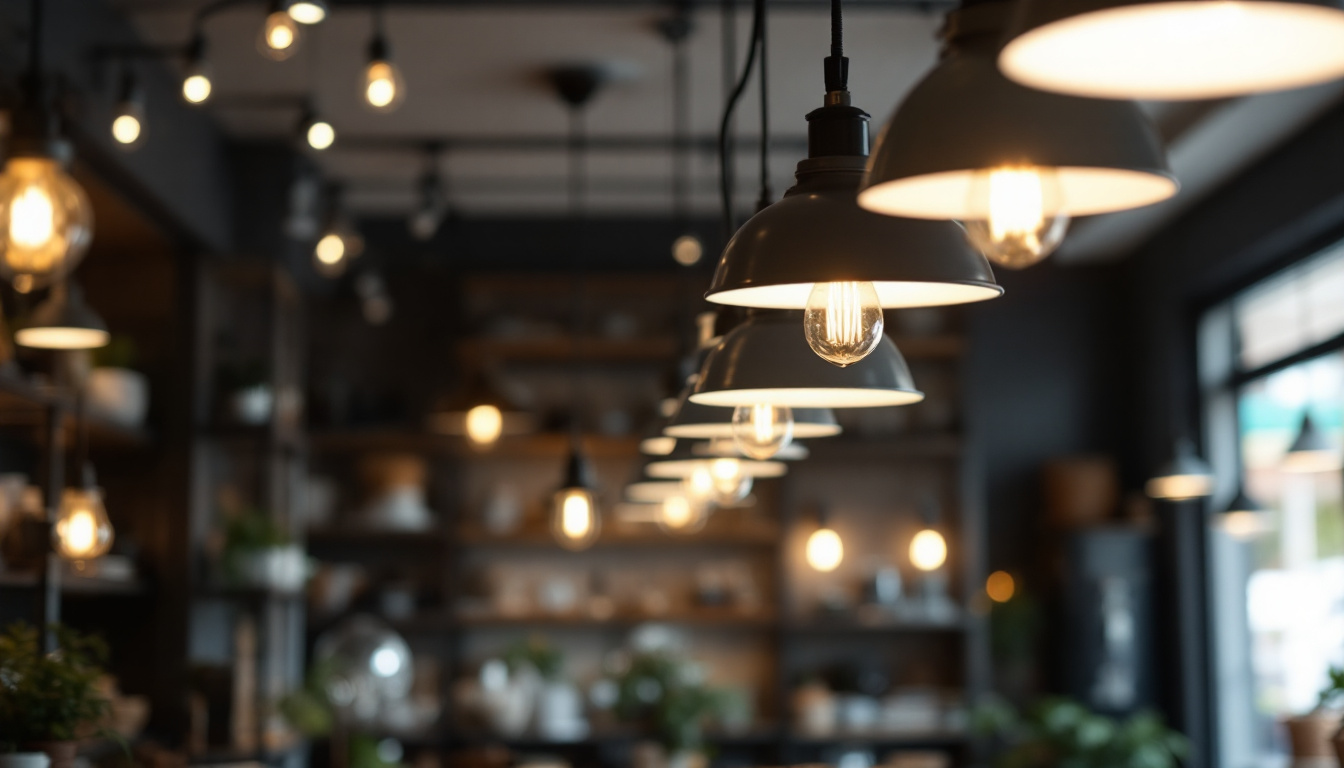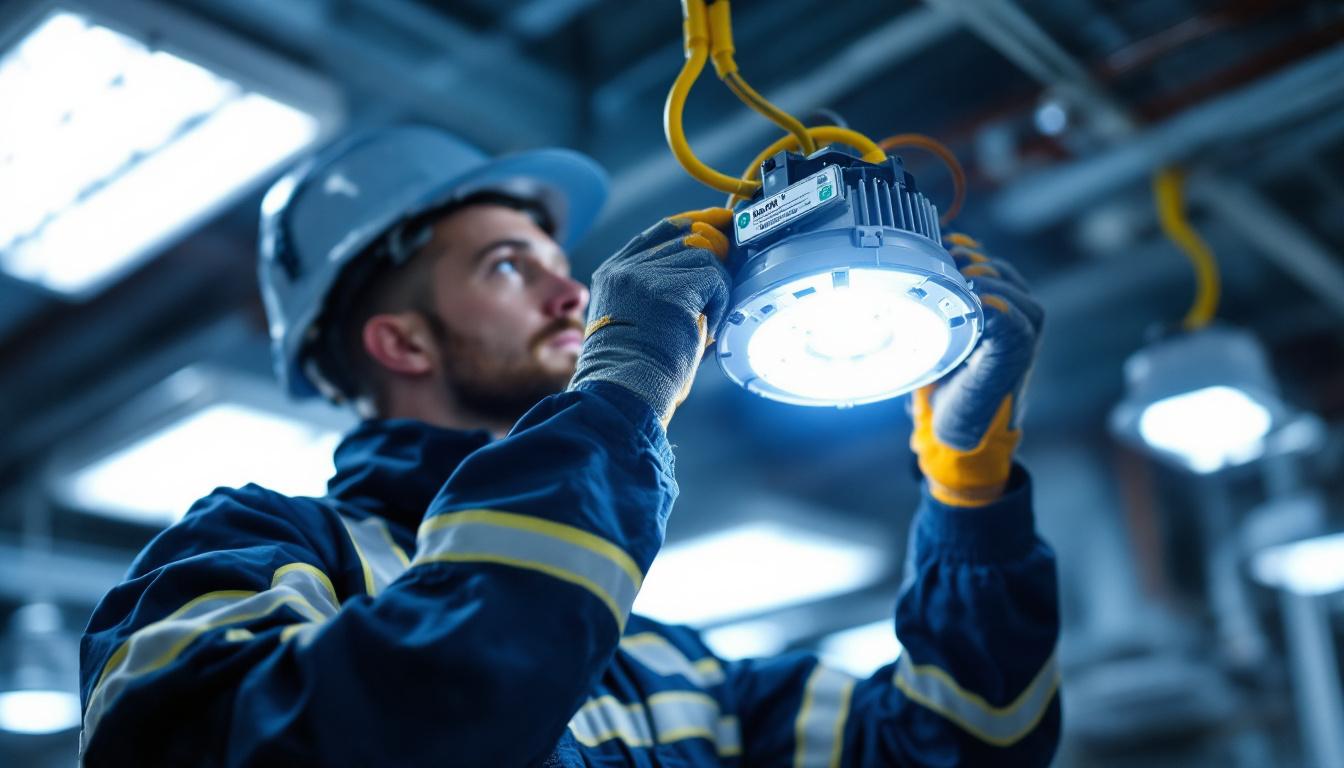
Lighting is a crucial aspect of any shop environment, impacting everything from product visibility to customer experience. For lighting contractors, understanding the nuances of shop lighting can enhance both the functionality and aesthetics of a space. This article provides expert advice tailored specifically for lighting contractors, covering essential considerations, design strategies, and the latest trends in shop lighting.
Before diving into specific lighting strategies, it’s important to grasp the fundamental principles of shop lighting. The primary objectives are to create a welcoming atmosphere, highlight products effectively, and ensure safety and accessibility for customers. A well-lit shop not only attracts customers but also encourages them to linger longer, ultimately increasing the likelihood of purchases. The right lighting can transform a mundane shopping experience into an engaging and enjoyable one, making it essential for retailers to invest time and resources into their lighting design.
Shop lighting can be categorized into three main types: ambient, task, and accent lighting. Ambient lighting provides overall illumination, creating a base level of light that allows customers to navigate the space comfortably. Task lighting, on the other hand, focuses on specific areas where detailed activities occur, such as checkout counters or workstations. Lastly, accent lighting is used to highlight particular products or displays, drawing attention to key items in the store. This strategic use of lighting not only enhances visibility but also helps in storytelling, allowing retailers to create a narrative around their products.
Understanding these types of lighting helps contractors design a layered approach, ensuring that each area of the shop is well-lit according to its purpose. A balanced combination of these lighting types can enhance the overall shopping experience. For instance, a clothing store may utilize soft ambient lighting to create a relaxed atmosphere, while employing focused task lighting in fitting rooms to ensure customers can see themselves clearly. Meanwhile, accent lighting can be used to spotlight seasonal promotions or featured collections, guiding customers towards special offers and new arrivals.
Color temperature, measured in Kelvin (K), plays a significant role in how products are perceived. Warm white light (2700K-3000K) creates a cozy atmosphere, ideal for retail environments selling clothing or home goods. In contrast, cooler white light (4000K-5000K) is often preferred in electronics or hardware stores, as it enhances clarity and detail. The choice of color temperature can also influence customer mood and behavior; warmer tones tend to evoke feelings of comfort and relaxation, while cooler tones can create a sense of alertness and focus.
Contractors should consider the type of merchandise when selecting the appropriate color temperature. Additionally, using a consistent color temperature throughout the shop helps maintain a cohesive look and feel. Beyond just the products, the color temperature can also affect how staff interact with customers, as a well-lit environment can boost morale and productivity. Furthermore, incorporating dimmable lighting options allows for flexibility, enabling retailers to adjust the ambiance based on the time of day or special events, thus enhancing the shopping experience even further.
Once the basics are understood, the next step is to implement effective design strategies. A well-planned lighting design can significantly influence customer behavior and purchasing decisions.
Dividing the shop into distinct zones can improve the shopping experience. Each zone should serve a specific purpose, whether it’s showcasing new arrivals, seasonal promotions, or clearance items. By using different lighting techniques in each zone, contractors can guide customers through the store and encourage exploration.
For instance, a bright, well-lit area for new arrivals can create excitement, while a softer, more intimate lighting scheme in a fitting room can enhance comfort. This zoning approach not only improves aesthetics but also strategically influences customer movement and engagement. Additionally, using accent lighting to highlight specific products can draw attention to high-margin items or featured collections, further enhancing the likelihood of a purchase. By thoughtfully considering the interplay of light and space, retailers can craft an immersive shopping environment that resonates with their brand identity.
Incorporating dimmers and lighting controls adds versatility to shop lighting. These tools allow contractors to adjust the brightness based on the time of day, customer traffic, or special events. For example, brighter lighting may be suitable during peak hours, while softer lighting can create a relaxed atmosphere during quieter times.
Moreover, integrating smart lighting technology can provide even greater flexibility. Automated systems can adjust lighting based on natural light levels or occupancy, ensuring optimal energy efficiency while enhancing the shopping experience. This adaptability not only contributes to sustainability efforts but also allows retailers to create dynamic atmospheres that can change throughout the day. For instance, a store could transition from a bright, energetic vibe during morning hours to a warm, inviting glow in the evening, encouraging customers to linger longer and enjoy their shopping experience. Such strategic lighting adjustments can turn a simple shopping trip into an engaging journey, ultimately fostering customer loyalty and repeat visits.
As energy costs rise and environmental concerns grow, energy-efficient lighting solutions are more important than ever. Lighting contractors play a crucial role in helping shop owners select sustainable options that reduce energy consumption while maintaining quality lighting.
LED lighting has revolutionized the industry, offering significant advantages over traditional incandescent and fluorescent options. LEDs consume less energy, have a longer lifespan, and produce less heat, making them an ideal choice for shop lighting. Additionally, they are available in a variety of color temperatures and styles, allowing for creative design possibilities.
Contractors should educate clients about the long-term cost savings associated with LED installations, as well as the potential for rebates or incentives that may be available for energy-efficient upgrades. This knowledge can help clients make informed decisions that benefit both their bottom line and the environment.
Maximizing natural light is another effective way to enhance shop lighting while promoting sustainability. Skylights, large windows, and strategically placed mirrors can all help to bring in natural light, reducing the need for artificial lighting during the day.
However, it’s essential to balance natural light with artificial sources to avoid glare or uneven lighting. Contractors should consider the orientation of the shop and the types of products displayed to ensure that natural light enhances rather than detracts from the overall lighting design.
Staying informed about the latest trends in shop lighting can give contractors a competitive edge. As consumer preferences evolve, so do lighting solutions that cater to these changes.
Minimalist and industrial lighting designs have gained popularity in recent years. These styles often feature exposed bulbs, clean lines, and a focus on functionality. Such designs can create a modern and sophisticated atmosphere, appealing to a wide range of customers.
Contractors should consider incorporating fixtures that align with these trends, as they can enhance the overall aesthetic of the shop while providing effective illumination. Additionally, these styles often allow for greater flexibility in terms of placement and configuration.
The rise of smart lighting technology is transforming the way shops approach lighting design. Features such as remote control, programmable settings, and integration with other smart systems allow for a more dynamic lighting environment.
Contractors should familiarize themselves with the various smart lighting options available and be prepared to recommend solutions that align with the shop’s needs. Educating clients about the benefits of smart technology can also help them understand the value of investing in these advanced systems.
Proper installation is critical to the success of any lighting project. Contractors must pay attention to various factors to ensure that the lighting performs as intended and meets safety standards.
When installing lighting fixtures, careful consideration must be given to placement and spacing. Overlapping light can create harsh shadows, while inadequate coverage can lead to dark spots. A well-thought-out layout will ensure that the entire shop is evenly illuminated.
Contractors should use lighting design software or tools to simulate the lighting effects before installation. This approach allows for adjustments to be made in the planning phase, ultimately saving time and resources during installation.
Compliance with local building codes and regulations is essential for any lighting installation. Contractors must stay informed about the latest codes related to electrical systems, energy efficiency, and safety standards.
Failing to comply with regulations can result in costly fines or the need for rework. Therefore, it’s crucial for contractors to conduct thorough research and ensure that all installations meet the necessary requirements.
Shop lighting is a multifaceted aspect of retail design that requires careful consideration and expertise. For lighting contractors, understanding the fundamentals, implementing effective design strategies, and staying updated on trends are essential for success. By focusing on energy efficiency, sustainability, and compliance, contractors can deliver exceptional lighting solutions that enhance the shopping experience while meeting the needs of their clients.
Ultimately, the goal is to create a well-lit environment that not only showcases products but also invites customers to engage and explore. With the right knowledge and approach, lighting contractors can play a pivotal role in transforming shop spaces into vibrant, inviting destinations.
Ready to elevate your lighting projects with superior quality and unbeatable value? At LumenWholesale, we provide lighting contractors like you with spec-grade lighting products at wholesale prices that simply can’t be matched by local distributors. Our commitment to quality and affordability ensures that you have access to the best lighting solutions for any shop environment, all while enjoying the convenience of bulk buying with free shipping. Don’t let inflated markups dim your project’s potential. Choose LumenWholesale for a seamless experience that combines quality, affordability, and convenience. Wholesale Lighting at the Best Value is just a click away.

Discover the latest trends in LED lighting for bathrooms that every contractor should be aware of.

Discover how High Intensity Discharge (HID) headlights can revolutionize your vehicle’s lighting system.

Discover the often-overlooked aspects of direct lighting that even seasoned contractors miss.

Discover the essential role of ballasts in lighting systems with our comprehensive guide for contractors.